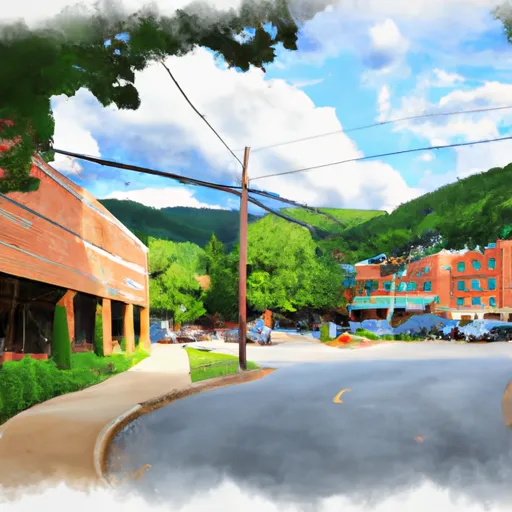-
 Snoflo Premium
Snoflo Premium
Get unlimited access to all our content
With no Ad interruptions! - Start Your Free Trial Login with existing account
Blue-Ridge
Eden Index
Climate
7.2
•
Recreation
5.0
•
Community
2.3
•
Safeguard
5.2/10

Blue Ridge is a small town in the northern part of Georgia, known for its beautiful mountain views and outdoor recreation opportunities. The climate is mild, with average temperatures ranging from the mid-50s in the winter to the mid-80s in the summer. The town is surrounded by the Blue Ridge Mountains, which provide a source of clean water for the area's hydrology. The Toccoa River runs through the town and offers opportunities for fishing, tubing, and kayaking. Hiking is also popular in the area, with numerous trails in the nearby Chattahoochee National Forest. Lake Blue Ridge is another popular spot for boating and fishing. With its picturesque surroundings and variety of outdoor activities, Blue Ridge is a great destination for nature enthusiasts.
What is the Eden Index?
The Snoflo Eden Index serves as a comprehensive rating system for regions, evaluating their desirability through a holistic assessment of climate health, outdoor recreation opportunities, and natural disaster risk, acknowledging the profound impact of these factors on livability and well-being.
Climate Health Indicator (CHI): 7.2
Blue-Ridge receives approximately
1552mm of rain per year,
with humidity levels near 82%
and air temperatures averaging around
14°C.
Blue-Ridge has a plant hardyness factor of
7, meaning
plants and agriculture in this region tend to thrive during the non-winter months.
By considering the ideal temperature range, reliable water supplies, clean air, and stable seasonal rain or snowpacks, the Climate Health Indicator (CHI) underscores the significance of a healthy climate as the foundation for quality living.
A healthy climate is paramount for ensuring a high quality of life and livability in a region, fostering both physical well-being and environmental harmony. This can be characterized by ideal temperatures, reliable access to water supplies, clean air, and consistent seasonal rain or snowpacks.
Weather Forecast
Streamflow Conditions
Middle Tennessee-Hiwassee
Area Rivers
Middle Tennessee-Hiwassee
Snowpack Depths
Middle Tennessee-Hiwassee
Reservoir Storage Capacity
Middle Tennessee-Hiwassee
Groundwater Levels
Recreational Opportunity Index (ROI): 5.0
The Recreational Opportunity Index (ROI) recognizes the value of outdoor recreational options, such as parks, hiking trails, camping sites, and fishing spots, while acknowledging that climate plays a pivotal role in ensuring the comfort and consistency of these experiences.
Access to outdoor recreational opportunities, encompassing activities such as parks, hiking, camping, and fishing, is crucial for overall well-being, and the climate plays a pivotal role in enabling and enhancing these experiences, ensuring that individuals can engage in nature-based activities comfortably and consistently.
Camping Areas
| Campground | Campsites | Reservations | Toilets | Showers | Elevation |
|---|---|---|---|---|---|
| Jacks River Fields | 14 | 2,865 ft | |||
| Amicalola Falls State Park | None | 1,779 ft | |||
| Frank Gross | 9 | 2,356 ft | |||
| Stone Mountain Park Campground | 430 | 1,558 ft | |||
| Deep Hole | 18 | 1,993 ft | |||
| Big Lost Creek | 15 | 1,024 ft | |||
| Thunder Rock | 42 | 1,140 ft | |||
| Dobbins Lakeside Military | None | 1,079 ft | |||
| Morganton Point | 82 | 1,753 ft | |||
| Tumbling Creek | 8 | 1,505 ft |
Nearby Ski Areas
Catastrophe Safeguard Index (CSI):
The Catastrophe Safeguard Index (CSI) recognizes that natural disaster risk, encompassing floods, fires, hurricanes, and tornadoes, can drastically affect safety and the overall appeal of an area.
The level of natural disaster risk in a region significantly affects safety and the overall livability, with climate change amplifying these risks by potentially increasing the frequency and intensity of events like floods, fires, hurricanes, and tornadoes, thereby posing substantial challenges to community resilience and well-being.
Community Resilience Indicator (CRI): 2.3
The Community Resilience Indicator (CRI) recognizes that education, healthcare, and socioeconomics are crucial to the well-being of a region. The CRI acknowledges the profound impact of these elements on residents' overall quality of life. By evaluating educational resources, healthcare accessibility, and economic inclusivity, the index captures the essential aspects that contribute to a thriving community, fostering resident satisfaction, equity, and social cohesion.

